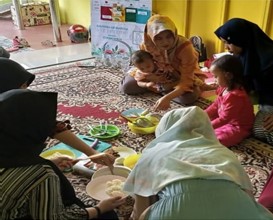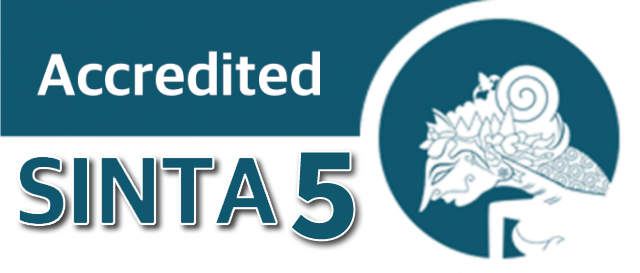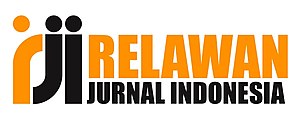Pemenuhan Pangan Lokal Sebagai Kebutuhan Gizi Bayi Dan Balita Umur 6 -24 Bulan Di Kabupaten Banyumas
DOI:
https://doi.org/10.35960/pimas.v1i1.729Keywords:
Local food, training, cadres, Infants and ToddlersAbstract
One of the risk factors for stunting is lack of nutritional intake in the long term. Toddlers with poor nutritional status have a low immune system which can make them susceptible to infectious diseases. The macro nutrition improvement program is directed at reducing macro nutrition problems, which primarily address the problem of protein energy deficiency. The processing and development of local food ingredients as a source of need to overcome the stunting problem is still not widely carried out by mothers in the Banyumas Regency area.Integrated service post cadres (posyandu) and Family Welfare Development cadres (PKK) are major milestones in public health, especially infants and toddlers through their activities in mobilizing their citizens to utilize local food. So that in this activity the researchers held training for cadres, PKK mothers and mothers of babies and toddlers 6 - 24 months in all areas of Banyumas Regency in local food processing as an effort to handle and prevent nutritional problems in Banyumas Regency.Based on observations that have been made, out of all partners, around 80% of partners are skilled, and independent in implementing the processing of complementary foods made from local breast milk.
References
2. Aryastami, N. K. (2017). Kajian Kebijakan dan Penanggulangan Masalah Gizi Stunting di Indonesia. Buletin Penelitian Kesehatan, 45(4), 233–240. https://doi.org/10.22435/bpk.v45i4.7465.233-240
3. BAPENAS. (2011). Rencana aksi PAngan ANsional Pangan dan Gizi 2011-2015. September.
4. BPS. (2020). Profil Kesehatan Ibu Dan Anak 2020. Badan Pusat Statistik, 53(9), 111–133.
5. Dinas Kesehatan Provinsi Jawa Tengah. (2019). Profil Kesehatan Provinsi Jateng Tahun 2019. Dinas Kesehatan Provinsi Jawa Tengah, 3511351(24), 273–275.
6. Hendricks, M. (2001). Management of the child with serious infection or severe malnutrition. South African Medical Journal, 91(10 I), 832.
7. Kemenkes. (2018). Riset Kesehatan Dasar Tahun 2018.
8. Kemenkes. (2019). Profil Kesehatan Indonesia Tahun 2020.
9. Kemenkes 2018. (n.d.). Situasi Balita Pendek (Stunting) di Indonesia, 2018.
10. Kemenkes RI. (2011). KEPMENKES RI Tentang Standar Antropometri Penilaian Status Gizi Anak. In Jornal de Pediatria (Vol. 95, Issue 4, p. 41).
11. Margaretta, S. S. (2019). Edukasi dan Pelatihan Pembuatan Makanan Pendamping ASI (MP-ASI) di Posyandu Desa Sonorejo, Kecamatan Grogol, Kabupaten Kediri. Journal of Chemical Information and Modeling, 1(2), 248–252.
12. Mohammed, S. H., Larijani, B., & Esmaillzadeh, A. (2019). Concurrent anemia and stunting in young children: Prevalence, dietary and non-dietary associated factors. Nutrition Journal, 18(1), 1–10. https://doi.org/10.1186/s12937-019-0436-4
13. Report, G. N. (2020). Global Nutrition Report. In The Global Nutrition Report’s Independent Expert Group.
14. Sudaryati, E., Nasution, E., & Yustina, I. (2017). Stunting and Anemia in Infants Among Breastfeeding Mothers in Binjai City. 1(PHICo 2016), 331–336. https://doi.org/10.2991/phico-16.2017.14
15. WHO. (2003). Global Strategy for Infant and Young Child Feeding. Fifthy-Fourth World Health Assembly, 1, 8.




.png)










